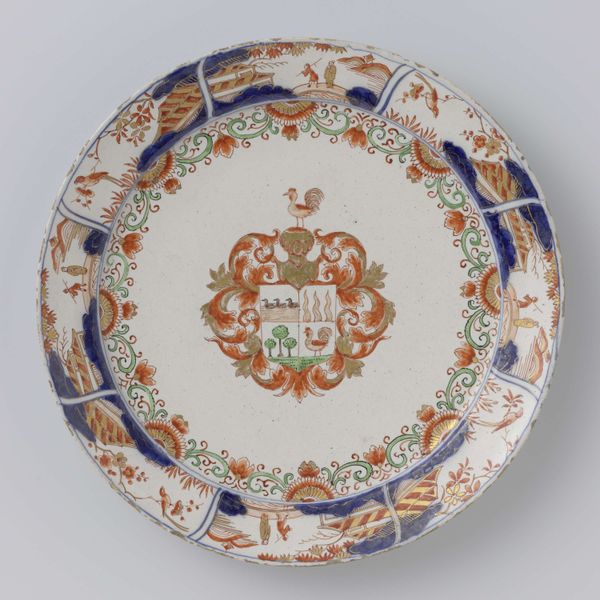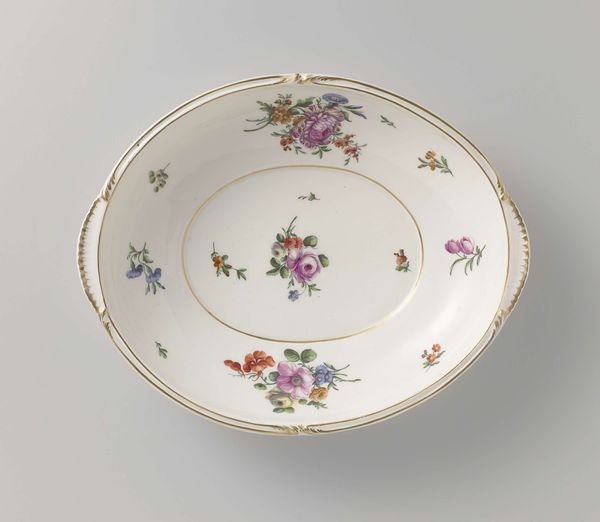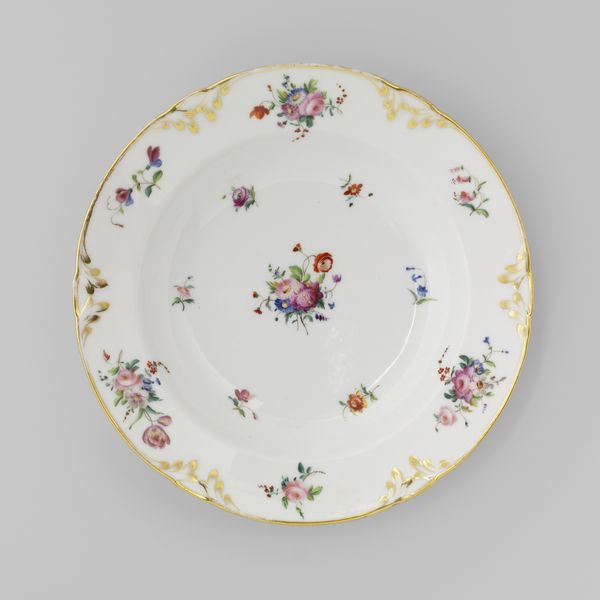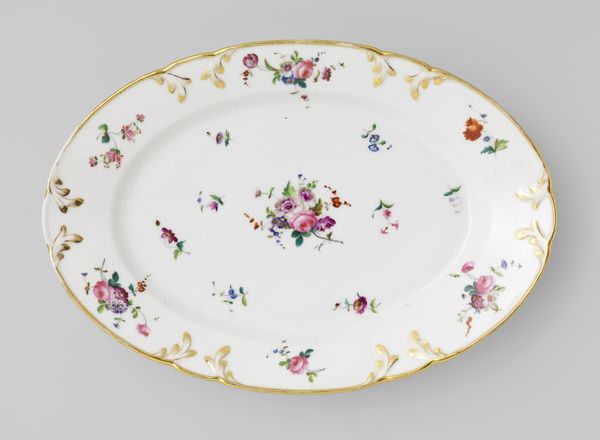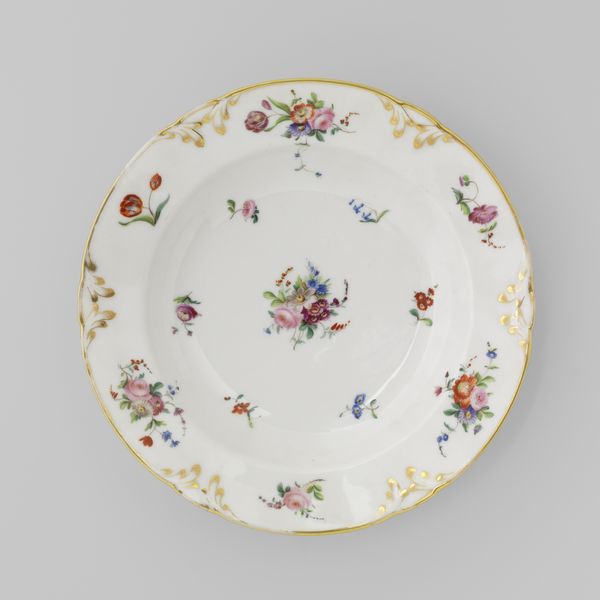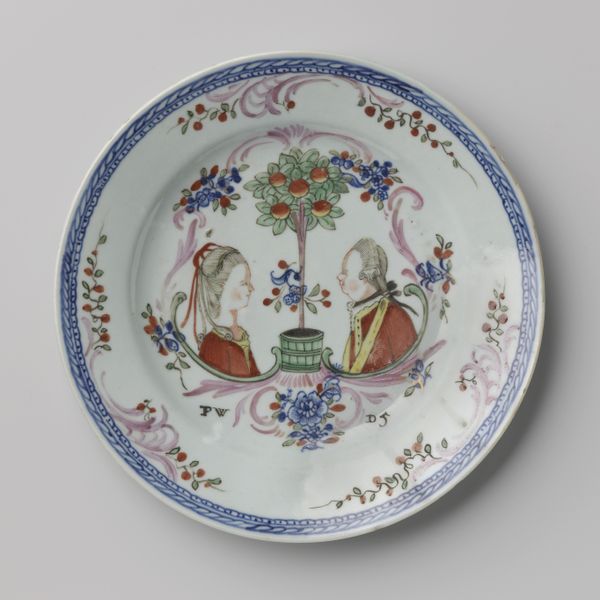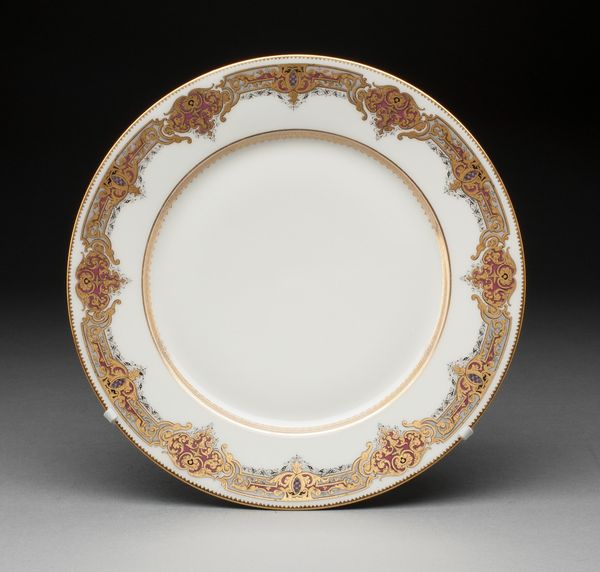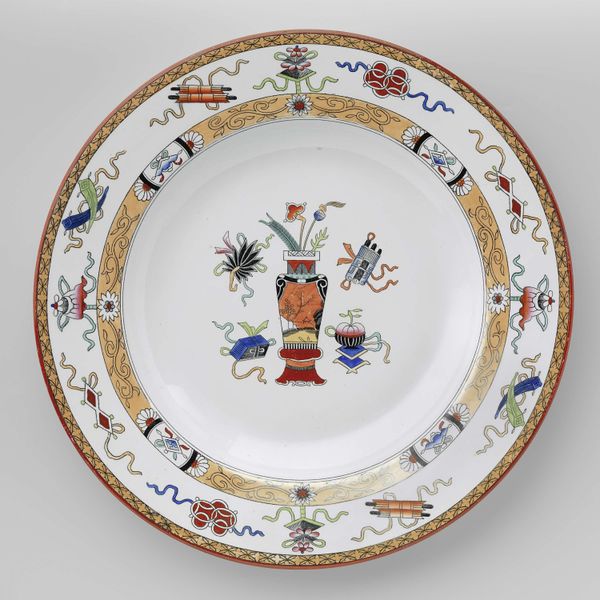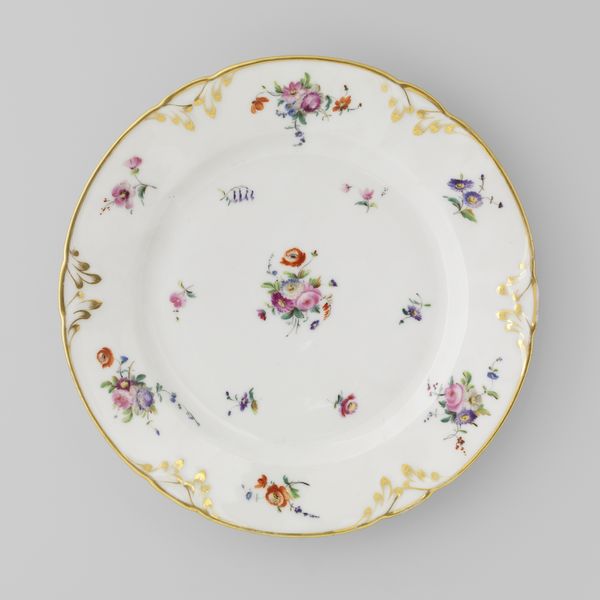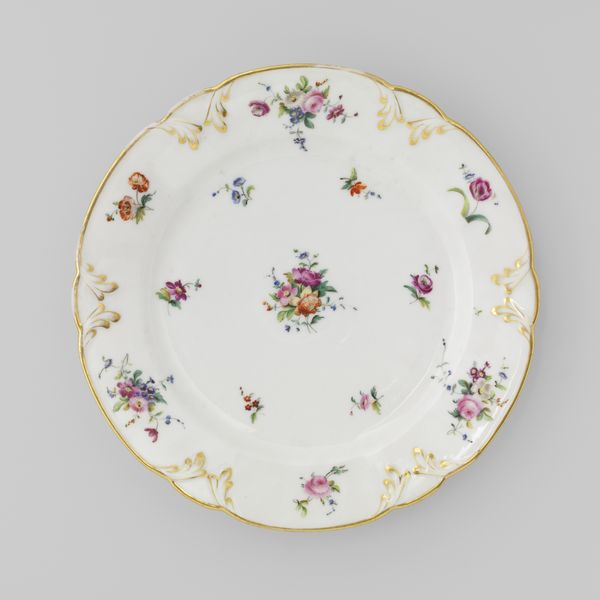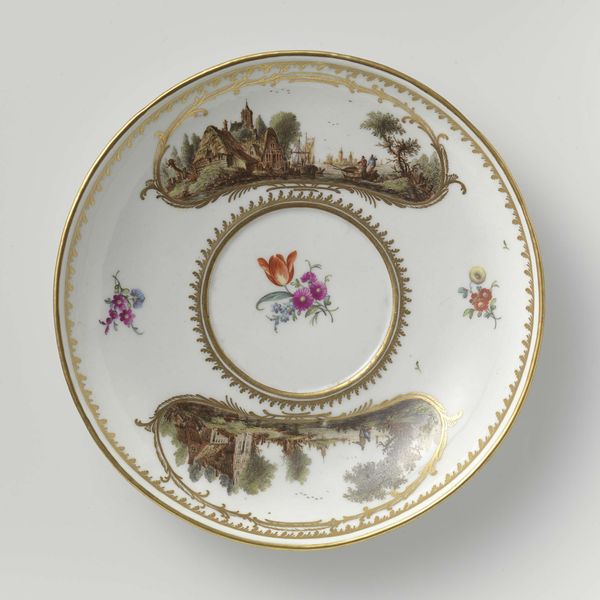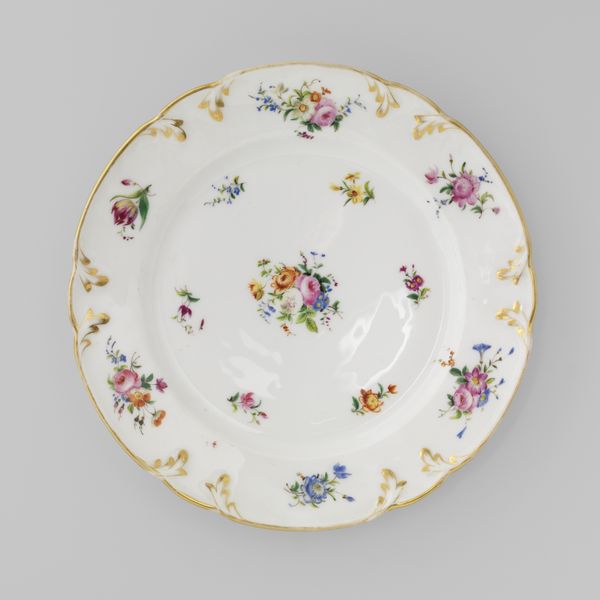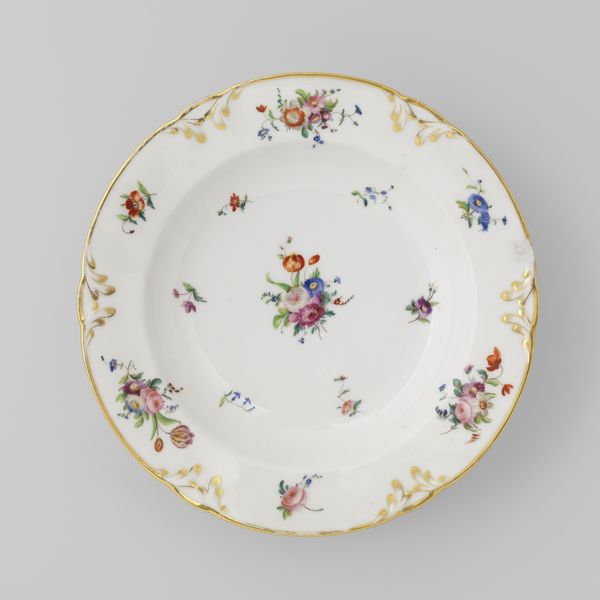
Dish with Chinese scenes, flower sprays and ornamental borders c. 1730 - 1740
0:00
0:00
claudiusinnocentiusfabriekdupaquier
Rijksmuseum
tempera, ceramic, porcelain
#
tempera
#
asian-art
#
ceramic
#
porcelain
#
ceramic
#
genre-painting
#
rococo
Dimensions: height 5.8 cm, diameter 30.2 cm, diameter 15.2 cm
Copyright: Rijks Museum: Open Domain
Editor: Here we have a porcelain dish from around 1730-1740, created by Claudius Innocentius Du Paquier. It's decorated with Chinese scenes, flowers, and gold ornamental borders. It’s incredibly ornate; the dish seems almost overcrowded. What strikes you most about it? Curator: The most striking aspect is precisely what you identified: its ornamentation. But let's consider the historical context. This dish exemplifies a European fascination with the "Orient," reflecting colonial power dynamics and the appropriation of cultural aesthetics. What seems merely decorative becomes, under closer scrutiny, an assertion of dominance. How do you interpret the depiction of “Chinese scenes?" Editor: I see little vignettes of figures in what I assume are domestic settings. The figures are exoticized in a way, fitting neatly into the borders. They lack individual characteristics. Curator: Exactly. The "Chinese scenes" are not authentic representations but European fantasies constructed from limited and often distorted information. This dish participated in shaping a specific image of the East that justified colonial exploitation and exoticism. Does the Rococo style contribute to this exoticism in your opinion? Editor: It does. The swirling patterns and gilded elements add to the fantasy. The porcelain itself feels like a precious commodity, emphasizing wealth and power. Curator: Precisely! The dish, therefore, becomes an artifact of cultural exchange *and* appropriation. The flowers, though seemingly benign, were also strategically deployed in the decorative arts, reflecting control over resources and trade routes. Consider its display; imagine the context in which it would have been presented. Editor: That makes the dish seem like more than just a beautiful object. It’s almost propaganda, promoting a certain worldview. Curator: I agree. So, looking at it now, it becomes something to question, rather than passively admire, right? Editor: Definitely! I’ll never look at a porcelain dish the same way again. It’s fascinating how historical context transforms our perception.
Comments
No comments
Be the first to comment and join the conversation on the ultimate creative platform.
